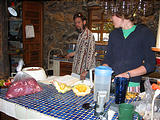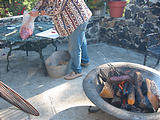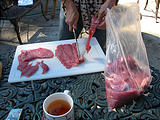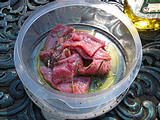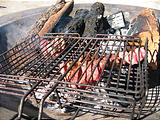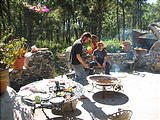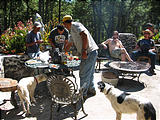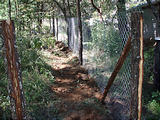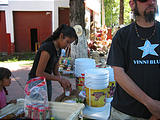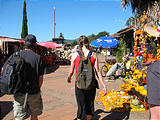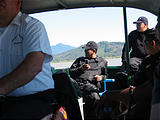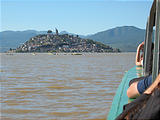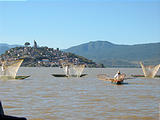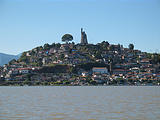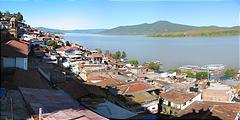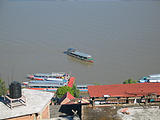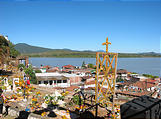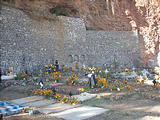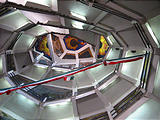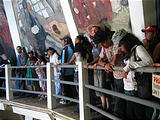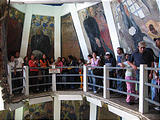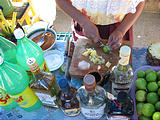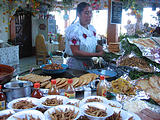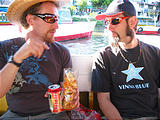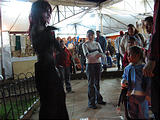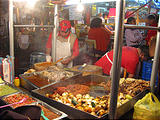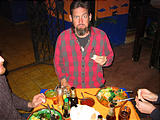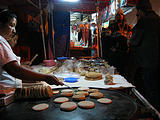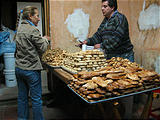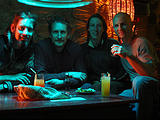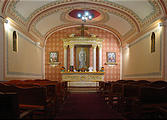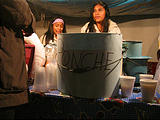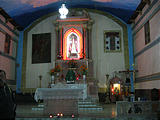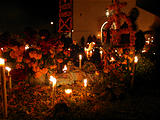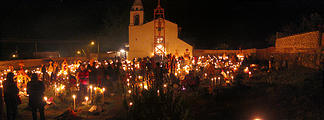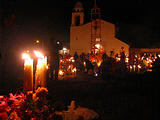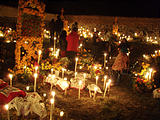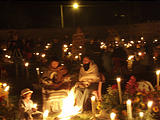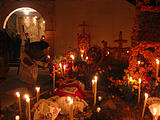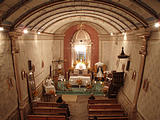Day of the Dead
We started our Day of the Dead by cooking up some meat from the calf butchered the day before. As there is no refrigerator at Rancho Madroño, most of the meat was given away. Brian kept only a small amount of meat, and the hide.
A new fenced pen was hastily constructed to keep the dogs from wandering.
Then we went wandering to check out the Day of the Dead festivities. Our first stop was the docks at Pátzcuaro, where we found that the usual long lines for a boat ride to the island town of Janitzio were almost non-existent! We jumped at the opportunity, and bought tickets to the island.
Pátzcuaro and Janitzio are popular Mexican tourist destinations, but very few gringos visit. Our full boat contained only three other foreign tourists besides ourselves, as well as a large group of police officers (also on holiday?). On the way, we passed by a group of people who pretended to fish the old fashioned way with traditional butterfly nets, before asking us for some money.
Only accessible by boat, the ancient Purepecha (Tarascan) town of Janitzio covers a tiny island. There are no cars or roads — only walkways and stairs. Lots of stairs.
The Janitzio cemetery, decorated for Day of the Dead.
At the top of the hill is a statue of José Maria Morelos , built in the 1930s. For a few pesos, you can go inside and climb the spiral walkway past painted murals to a viewpoint at the top. We waited in a long line for the last squeeze into the very top of the statue, but after 20 minutes of not moving we gave up. For some reason, photography is not allowed inside the statue.
Around the statue, there are booths selling interesting mugs that are sold filled with a fruity boozy concoction. We also tried some other interesting snack foods sold on the island.
The return boat ride. A band sat right next to us, and played the whole way home.
Evening in Pátzcuaro. It turns out that the action of Day of the Dead is really at night, and things were just gearing up. Noche de los Muertos is what they call it, and it's actually celebrated for two nights, Nov 1st> & 2nd. We passed a huge truck stuffed full of marigolds sold for grave decorations, and the seller said he'd already sold six of these truckfuls that same day. After having coffee, dinner, drinks, and exploring for a while, we left Pátzcuaro at about midnight, passing a huge traffic jam of cars trying to get in for the night's festivities.
The Santa Muerte church near Eronga.
The town of Jarácuaro, formerly an island (before Lake Pátzcuaro shrank). We bought some ponche (a warm spiced drink), and checked out the celebrations in the church square. We spotted a surprising number of gringo tourists on organized Day of the Dead tours.
The beautiful candlelit cemetery of the town of Arocutin. Here, the local families celebrating the dead were outnumbered by foreign tourists with their digital cameras. The ancient church had curious outward-leaning walls.



